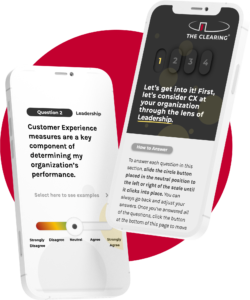Buzzwords Defined: Minimum Viable Product (MVP)
Earlier in our Buzzwords Defined blog series, my colleague Sharon Benjamin, Ph.D. wrote about prototyping and The Clearing’s rapid prototyping tool, the Amperian Cycle®. It’s safe to say today’s topic, Minimum Viable Product (MVP for short), is the “MVP” of the prototyping process, as it’s often the outcome an organization has set out to achieve.
So, what does Minimum Viable Product mean?
It’s simply defining what is the least amount possible needed to start developing – be it a physical product, an IT system, or organizational design. The MVP allows an organization to share an early concept with its customer or beta group for testing and receive real-time feedback before going all-in on one given solution.
For some organizations, this is a difficult concept to grasp. It is no surprise then that “How can we push something out to our customers if it’s not perfect?” is a question we’re frequently asked by clients.
At The Clearing, we work with a number of large agencies. Unlike at a tech startup, you won’t see a “Fail Fast” sign on the wall within the federal government. In fact, failure – fast or not – is often thought of simply as lack of success, not a valuable learning tool.
“The key to a successful MVP is shifting that narrative to ensure leaders become comfortable with learning through iteration and not letting the perfect be the enemy of the good.”
We find the prototyping and MVP process actually allows an organization to let go of some of the fear of failure. Why? Because it’s cheaper and less time-intensive to iterate into a solution than picking one path, allocating all of your resources to it, and crossing your fingers it all works as you hope it will.
That means an organization can leverage the trial and error process in a fairly inexpensive way, mitigating the long-term risk of investing in a poor solution. The outcome of “failing fast” is that an organization, or in this case a federal agency, can afford to test multiple “best case” solutions before committing significant resources and time to the best one that meets market needs.
Imagine it this way. If an organization builds a product or solution from A to Z and it fails, it would be forced to completely restart again from A. With MVP, an organization can finish steps A, B, and C, then push its solution out to the public and if it’s unsuccessful or not quite what the market is looking for, it’s a lot easier to restart from point C than to restart from Z.

An MVP is a product that is launched with enough features in order to get initial users and feedback to improve future iterations of the product.
How The Clearing Approaches the Minimum Viable Product Process
When we work with clients to create an MVP, we leverage a people-centric approach. That means centering on both the people involved and the customer, or the stakeholder, who will experience the MVP. For example, that means we regularly ask questions about what is most important to this stakeholder. For testing purposes, do they require A, B, and C – or can we omit C and still learn what we need to begin full-scale development? By identifying the customer and bringing the customer-centric design to creating the MVP it helps streamline the process and pulls organizations back from the rabbit hole of trying to solve for every eventuality at once.
Tips for Approaching the Minimum Viable Product Process
Whether the MVP concept is brand new or old hat for a given organization, there are several items we consider when beginning the process.
Here’s a quick primer on what to keep top of mind around MVP:
- Ensure the organization understands the purpose of an MVP and set expectations accordingly. If a senior leader isn’t appropriately briefed, they may expect a fully-realized solution from the process – setting it up for failure from the outset.
- Create a safe space for failure. Without a safe space, developing an MVP goes from a learning exercise to a stressful process where the stakes often don’t match the purpose.
- Focus on the human-centric process. Remember that any solution developed will have an impact on both team members and customers.
- Make it time-bound. The purpose is to move fast. Time boxing the process ensures an organization will keep momentum.
If your organization is struggling to determine a path forward or is uncertain about priorities, an MVP may be the ticket to getting things moving. If you’re interested in how these concepts may apply to your organization, reach out to me directly for a quick chat at colleen.oneil@dev2021.theclearing.com.
